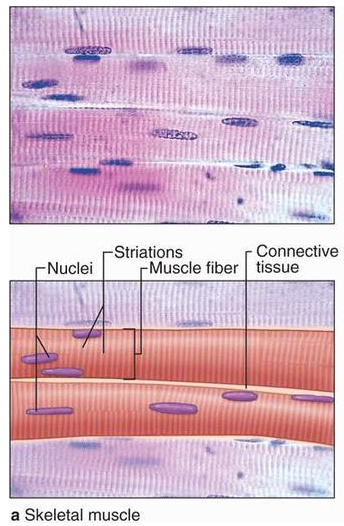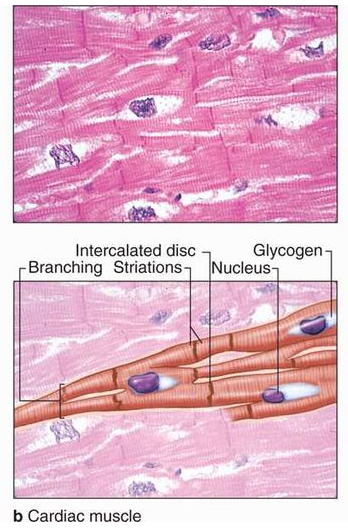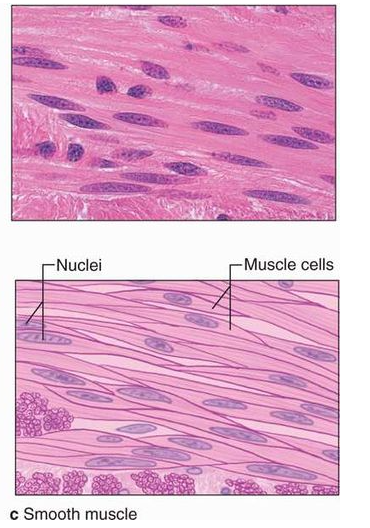Muscular Tissue
Many long, cylindrical fibers are organized in parallel arrays in each muscle. Myofibrils are a type of tiny fibril that makes up these fibers. Muscle fibers contract (shorten) in response to stimulus, then relax (lengthen) and uncontract in a coordinated manner. Their actions cause the body to move in order tochange the environment and maintain the postures of the various body parts. The sarcolemma is the muscle cell membrane, and the sarcoplasm is the muscle cell cytoplasm. The excitability of the sarcolemma allows it to conduct electrical impulses that occur during depolarization. Muscles are involved in all of the body's movements in general. Skeletal, smooth, and cardiac muscles are the three types of muscles. Skeletal muscle tissue is tightly bound to the bones. Striated (striped) skeletal muscle fibers are bundled together in a parallel pattern in a typical muscle like the biceps.Several bundles of muscle fibers are encased in a strong connective tissue sheath.Tendons connect skeletal muscles to bones, and they are responsible for all motions of bodily components in relation to one another. Skeletal muscle, unlike smooth and cardiac muscle, is controlled by the user. Shoulder muscles, hamstring muscles, and abdominal muscles are all examples of skeletal muscles. Smooth muscle fibers have no striations and taper at both ends (fusiform). They are held together by cell connections and bundled in a connective tissue sheath. This type of muscle tissue can be found in the walls of internal organs such as the blood vessels, stomach, and intestine. Smooth muscles are referred to as "involuntary" since they cannot be controlled directly. Cardiac muscle tissue is only found in the heart, where it performs coordinated contractions that allowthe heart to pump blood through the circulatory system.The only contractile tissue found in the heart is cardiac muscle tissue. The plasma membranes of heart muscle cells are fused.At some fusion points, communication junctions (intercalated discs) allow cells to contract as a group, meaning that when one cell receives a signal to contract, its neighbors are also stimulated to contract.



Figure 8: Muscular Tissue

 ACME SMART PUBLICATION
ACME SMART PUBLICATION
